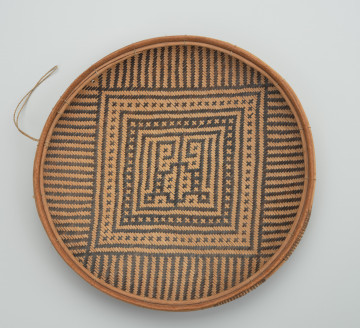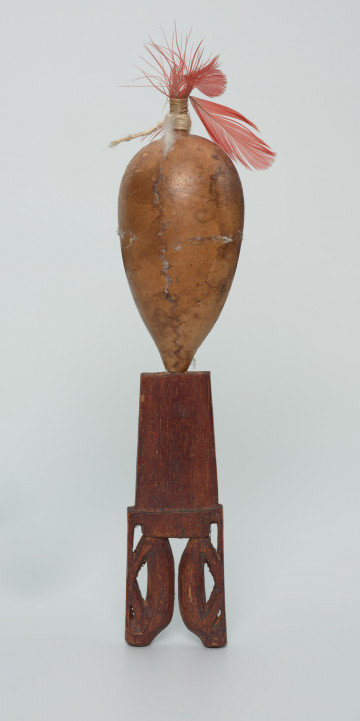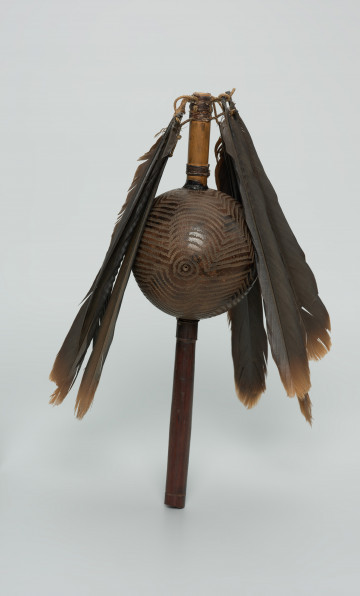
Decorated tray
około 1987
National Museum in Szczecin
Part of the collection: Crafts of the Amazon Indians
The wa'ja tomennato decorative trays are used to serve casave cakes and as an accessory during shamanic rituals. According to Ye'kuana Indian mythology, the ruler of wa'ja tomennato is Woroto Sakedi. The patterns decorating the trays are drawings with which he covers his face. Ye'kuana gained access to wa'ja tomennato baskets and trays after winning a battle with Waña Kasuwai - the Warishidi monkey ruler. The motifs decorating wa'ja tomennato depict various characters and events from Ye'kuana mythology. The plane of the drawing presented on wa'ja tomennato is divided into centre and periphery. The central motif is the centrally embedded Awidi pattern, which consists of four square serpentines. Awidi symbolises the venomous coral viper (Micrusus), which embodies Ye'kuan's widespread aversion to snakes and vipers and signifies considerable danger. The central element is surrounded by peripheral motifs - a zigzag pattern of Ahish, which symbolises the white heron, and a square frame of ishacudu. On the composition's edges, straight lines have been marked with konohocudu - the motif of rain, called 'the feet of heaven' by Ye'kuan. In Ye'kuan mythology, wa'ja tomennato trays function as a prototype of the shaman's weapon, which he uses to ward off enemies and diseases. The trays and the motifs decorating them, like any of his objects, are sometimes dangerous. For they have a power that only the shaman can control - in order to destroy an enemy, he throws them into the water, and the woven motifs turn into real caimans, anacondas, piranhas or scorpions, deadly monsters that carry out their master's orders. Nowadays, such trays are also manufactured for the tourist market.
Katarzyna Findlik-Gawron
Author / creator
Dimensions
cały obiekt: height: 7 cm, diameter: 45 cm
Object type
plate
Creation time / dating
Creation / finding place
Identification number
Location / status

około 1987
National Museum in Szczecin

około 1987
National Museum in Szczecin

około 1990 — 2000
National Museum in Szczecin
DISCOVER this TOPIC
National Museum in Lublin
DISCOVER this PATH
Educational path